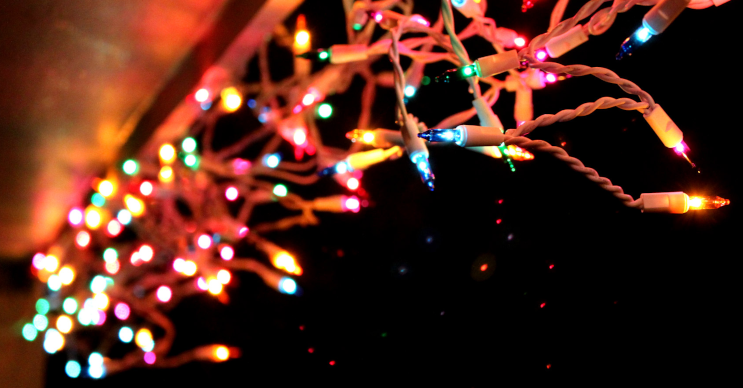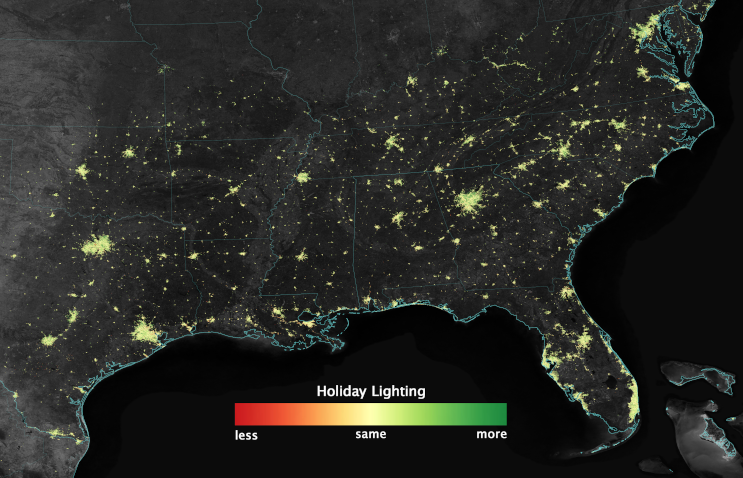Archives
June 2024
Categories
All
|
Back to Blog
793 words / 3-minute read For many people, holidays — whether that’s Christmas, Ramadan, Diwali or others — are a magical time of year. We gather with family and friends, celebrate religious traditions, and enjoy tidings of the season. Holidays are often marked with festive displays of outdoor lighting. In traditions with holidays near the winter solstice, these displays bring the joy of light to the darkness of mid-winter. But are holiday light displays light pollution, and should they concern us? The answer depends somewhat on how we define "light pollution". There's no one definition recognized universally. The way I define it is "any adverse impact due to the use of artificial light at night". That helps separate the valuable benefits of light at night from the many known and suspected harmful effects it can have. In this sense, not all outdoor light at night is light pollution. Instead, one would consider the purpose of using light and whether an installation of light is fit for that purpose. Of course, that calls into question the use of outdoor light at night for aesthetic reasons alone. Given what we know about the hazards of light pollution, is holiday lighting environmentally responsible? And does its popularity and social benefits outweigh any potential harms? How much light? Let's take a step back for the moment and consider a separate question: is light pollution from holiday lighting significant? A 2014 NASA study using Earth-orbiting satellite data suggests that it is in some parts of the world. Researchers found that in and near many major U.S. cities, "nighttime lights shine 20 to 50 percent brighter during Christmas and New Year's when compared to light output during the rest of the year". The trend holds elsewhere in the world, too. During the Islamic month of Ramadan, nighttime lights in some Middle Eastern cities are more than 50 percent brighter than during the rest of the year. City lights shine brighter during the holidays in the southeastern United States when compared with the rest of the year. Dark green pixels are areas where lights are 50 percent brighter, or more, during December. Credits: NASA's Earth Observatory/Jesse Allen Does this lighting yield "adverse impacts" on the nighttime environment? We know very little about that. To the extent that we understand how light emissions on the ground become skyglow, the brightening of the night sky that makes it difficult to see the stars, we should expect brighter skies during holiday periods. Other environmental influences complicate the picture. For example, winter weather at higher latitudes often means snow and ice on the ground. This makes surfaces more reflective, directing more artificial light upward into the night sky. Clouds overhead further "amplify" the effect and raise the brightness at ground level. Typical holiday lighting is unshielded, meaning that it emits light uniformly in all directions. Yet, it is often low-intensity; for example, think of the soft glow of string- or festoon-type lights. The color of light also influences the significance of light pollution. Multicolored holiday lights can thus yield more or less of an effect. Don't get the holiday blues Given these characteristics of holiday lighting, should we worry? Given the short duration of most holiday seasons, the answer is probably "no". The threat of light pollution is small compared to other kinds of lighting operated all night long on every night of the year. Except for installations in and near ecologically sensitive places, most holiday lighting is not a cause for special concern. It is yet possible to enjoy the warm feelings of holiday lights without causing undue environmental harm. There are several things that users of holiday lighting can do to make it a little more friendly to the night. First, user fewer lights overall. "That first string of lights you put out, it adds a lot of holiday cheer," says University of British Columbia business professor David Hardisty. "Having one string of lights up versus none makes a big difference. Having having six strings of light versus having five barely makes any difference." Second, consider the color of lights and avoid excessive use of lights that have a more "cool" or blue appearance. Blue light is most harmful to wildlife and contributes more than other colors to skyglow. If you use white lighting, select warmer lights that are close in color to a candle flame. Such lights are easier on the eyes at night. Lastly, control outdoor holiday lighting with timers and turn it off completely at bedtime. Lights illuminated all night long benefit no one and simply waste electricity. Instead, only run the lighting during the hours when people are generally outside at night to enjoy them. The responsible use of special lighting displays during holiday seasons exemplifies a bigger idea. Proper design, installation and operation of lighting for many applications can reduce light pollution. We serve clients who want to turn this idea into their reality. Contact us today to find out how we can help.
0 Comments
Read More
Your comment will be posted after it is approved.
Leave a Reply. |
 RSS Feed
RSS Feed


